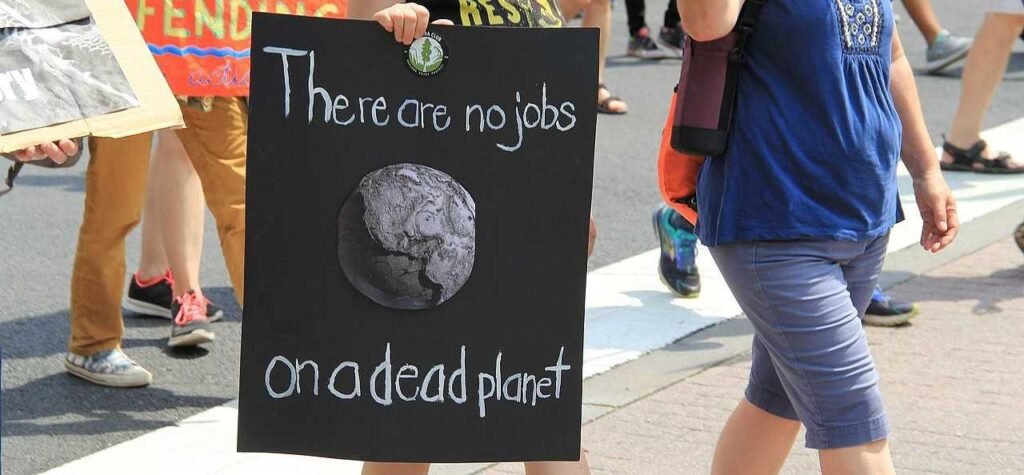The post-pandemic world is about change on a planetary scale. It broke the supply chain and the efforts for globalization. Then ad recurring billion-dollar weather events and the rapid divestment from Russian oil after the invasion of Ukraine. Change isn’t just coming, it is already here! And that is where the Three P’s come in.
Sustainability is an important concept for businesses these days, and one of the cornerstones to achieving it lies in the “Three P’s”. People, planet, and profit are all equally essential components of a successful, sustainable business model. At its core, sustainability means balancing the needs of each element in order to succeed both environmentally and financially. By understanding how people, planet, and profit work together to create a synergistic approach to your business operations, you’ll be able to maximize potential as well as minimize costs. In this blog post, we will explore what the Three P’s mean for your business and offer tips on how you can successfully implement them into your organizational strategy.
- What does people planet profit mean?
- What are the elements of sustainable development?
- What are the 5 R’s of sustainable development?
- What is the definition of sustainable development?
- What are the benefits of the triple bottom line?
What does people planet profit mean?
In a nutshell, “planet” means we should take care of our natural surroundings (such as reducing carbon emissions, rebuilding biodiversity, and desertification). “People” is about working together and improving the lives of everyone in the community (diversity, equity, inclusion). “Profit” is about sustainable innovation and opportunity. It’s what keeps us moving towards a better future. Together, if we make sustainable efforts to improve all three factors, it will benefit us all.
Some companies have already started prioritizing all three factors, and you’d be surprised at how much profit they’re seeing as a result of their efforts! It’s amazing what can happen when we work together towards a common goal, and that’s exactly what The Three P’s of Sustainability are all about. You might also want to look at Triple Bottom Line and ESG.

What is the first P in people profit planet?
The first P-planet. What is our planet’s most valuable resource? In my opinion, you could argue it is water as the earth needs water to live just as much as humans do. However, I would say that the most valuable resource of our planet is not water, but its resources. These resources include fresh water, the minerals and metals within the earth, and so much more.
A lot of people believe that a sustainable life is a simple one that doesn’t require too many resources to live comfortably. This isn’t entirely true-the fact of the matter is that we need resources to live, and there is no way around it. What we can do though, is make sure that these resources are being used in an efficient way way to do this is by reducing our waste!
There are a lot of things that companies can do to reduce their impact on the environment. These include reducing their carbon footprint and having recycling bins available in the workplace and other areas where employees frequently visit. Another thing that can be done is installing solar panels-many companies are now doing this because it saves them money on utilities! However, every business needs to examine its supply chain and see where its partners and suppliers affect the environment. This will expose risks and opportunities that may have been overlooked.
What is the second P in people profit planet?
The second P-people. Sustainability means managing our food supply in an efficient way, ensuring that the people who live on this earth have access to enough food. This means finding a way to provide everyone with affordable and healthy food, without wasting too much of it. Every year, a lot of food goes to waste many farmers produce foods in an unsustainable way due to the way that we do food.
At the same time, the second P is also referring to people’s lives. For example, many companies will provide their workers with a good work-life balance in order to make sure that they are healthy and productive at work. This is something that can be achieved by offering flexible hours, childcare benefits, and more. In order for people to feel comfortable working for a company, they need to feel like they have a good work-life balance. This also includes the balance of equity.
There are stakeholders in every country who are affected by the companies in their communities. To make sure that people are treated ethically, there should be guidelines in place for how these stakeholders are treated. This will ensure fairness and equity which is what will make us all sustainable!
What is the third P in people profit planet?
The third P-profit. It’s a simple equation: if a company doesn’t make a profit, it will go out of business. Profit isn’t just about making money- it’s about staying in business for the long run by being able to sustain yourself/business from a financial perspective.
It’s a balance that not everyone can achieve businesses in this world believe that they need to make the most money by lowering their prices and increasing margins without thinking about how they plan on achieving long-term success! This is why productivity plays such a big role when it comes to making efficient business decisions. Every business needs to be able to understand their cost structure if they hope to make a profit.
The same goes for employees they must be efficient in order to maximize their productivity, whether it’s by working smarter or finding ways to reduce expenses. One way that companies can do this is through telecommuting, allowing employees the flexibility of working from home.
You can’t improve what you don’t measure.
Free Verified Carbon Calculators.
Erase Your Carbon Footprint in less than 5 Minutes
Personal Carbon Footprint Calculator
Business Carbon Footprint Calculator
What are the elements of sustainable development?
The main elements of sustainable development are environmental protection, social inclusion, and economic growth. Just like a stool, these three elements must be strong and well-balanced to ensure that development can be sustained. These have become known as the 3-P’s: Planet, people, and profit.
What are the 5 P’s of sustainability?
In 2015, the UN crafted the 5 P’s of sustainability which are: People, Partnership, Peace, Planet, and Prosperity. This concept builds on the 3 P’s of sustainable development but adds Partnership and Peace. Partnership includes the interactions between companies, governments, and individuals; it also means working together to resolve sustainability issues. Peace is about ensuring that development takes place in a manner that does not create conflict or tension either between countries or within society.

What is sustainable development?
The main focus of sustainable development is not just on preserving human livelihood, but also on sustaining all species in order to avoid ecocide. The United Nations has declared that in order for at least one generation after us to inherit a healthy planet, it is our responsibility to do what we can to reduce emissions and to ensure we do not deplete natural resources.
However, there is a different view of sustainable development: people like Thomas Malthus and Paul Ehrlich claim that the planet cannot indefinitely sustain all the people on Earth, so to have a sustainable human race, population control is necessary. In this case, making profits can be seen as a threat, as a result of too much consumption and overexploitation of the environment.
What are the 5 R’s of sustainable development?
The 5 R’s have been proposed as a way to measure our impact on the planet. The main 5 R’s are:
- reduce – or minimize
- reuse – as much as you can
- recycle – the rest
- rethink about what you need
- restore – to bring things back to life.
What are the 3 Ps in CSR?
CSR stands for Corporate Social Responsibility. It’s the act of integrating sustainability into business models and practices to achieve long-term success rather than just aiming to reduce environmental impact or increase economic prosperity. Companies must meet their stakeholders’ needs the 3 P’s represent this idea perfectly without forgetting that companies also need to make a profit!
Planet People Profit-it’s all about balancing business with the environment. It seems simple enough, but you’d be surprised how many businesses don’t seem to care what they are doing to harm the planet.
How does the triple bottom line affect profit?
The triple bottom line was first used by John Elkington. Elkington is known for his involvement in the environmental industry and was a major driver in creating the idea of social entrepreneurship. It is a set of three measurements that can be used to measure a business or organization’s performance, which include:
- People/Social Benefit
- Planet Benefit
- Profit (or what can be described as a financial benefit)
A triple-bottom-line approach to understanding business practice is people, planet, and profit. It can be represented as follows:
People + Planet = Profit
The triple bottom line is sometimes referred to as the TBL, 3BL, the 3 P’s, or the three “P’s”. The triple bottom line relies on the view that there are three forms of capital – environmental, human, and social. Ultimately success requires ownership of these, hence an expanded definition of what counts as part of the bottom line.
The triple bottom line is often seen as a new approach to business, but it has its roots in the traditional business model where there are two types of capital: human and physical. It can be argued that these are not in fact separate forms of capital, but rather one and the same. The original definition of “profit” comes from the idea of “excess produce or gain beyond what is needed for subsistence and reproduction.”
John Elkington also believes that there is a fourth P: power. Power is the ability of a business to influence social, environmental, and economic issues.
What is the definition of sustainable development?
Definition: Sustainable development is a term that has evolved over time. The Brundtland Report defined sustainable development as “meeting the needs of the present without compromising the ability of future generations to meet their own needs.”
What are the benefits of the triple bottom line?
TBL, or “triple bottom line,” is a philosophy and business model that considers social and environmental factors as important as financial ones. Companies that practice TBL consider the planet’s well-being, the community’s development, and their employees’ satisfaction. It has been shown that with these three elements in balance, the company will be more successful financially.
Why should we care about the triple-bottom-line approach?
TBL companies prioritize making less of an impact on the environment. This means they produce less waste and run with the most eco-friendly methods possible. Even if you are not an environmentalist, there are many other reasons to care about TBL practices.
For instance, companies that place more value on their community than on their bottom line usually create a better work environment for employees. This can lead to happier employees who are more productive. More productivity often leads to less employee turnover, which ultimately saves employers money.
Another benefit of TBL is that it allows companies to use their resources wisely because they know that they can’t waste anything. For example, some companies may think that donating old computers or office equipment to charities is a waste of money; however, TBL companies know that they will either reuse the equipment or recycle it. This is just one way TBL saves companies money because they are not buying new products every time something breaks down.
The biggest benefit of TBL may be realized after a company’s death. Some business owners choose to include charitable causes in their wills so that their businesses can continue to support them even after they are gone. One example of this is Jerry Greenfield, co-founder of the famous ice cream brand Ben & Jerry’s. He says that he will be leaving the company he created “to do good.”
How do we implement TBL or the triple bottom line concept?
For a company to truly practice TBL, all three sectors—planet, people, and profit—must be taken into account. To create a successful TBL business model, companies need to consider how their decisions affect the environment, people, and ultimately their own profits.
This is not an easy task because it requires companies to make changes on all levels. They need to implement sustainable policies in order to reduce waste caused by manufacturing, shipping products, and running the business. However, these policies only create positive effects if people are educated on how they work.
It starts with the CEO because he or she needs to set an example. The CEO must make sure that all company heads are also TBL advocates, but in order for this to happen, employees at all levels need to see the benefits of these policies.
You might also want to read…
What are the 3 components of the triple bottom-line approach?

Dean Emerick is a curator on sustainability issues with ESG The Report, an online resource for SMEs and Investment professionals focusing on ESG principles. Their primary goal is to help middle-market companies automate Impact Reporting with ESG Software. Leveraging the power of AI, machine learning, and AWS to transition to a sustainable business model. Serving clients in the United States, Canada, UK, Europe, and the global community. If you want to get started, don’t forget to Get the Checklist! ✅
